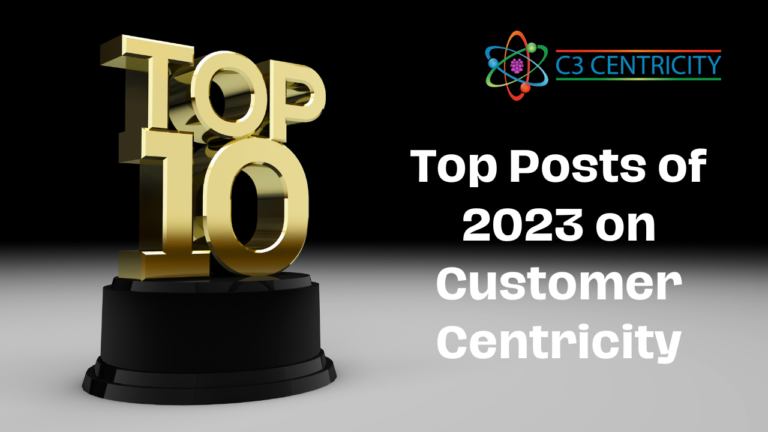Every business should strive to improve their customers’ experience with their products and services. Adopting a customer first strategy is therefore often mentioned as a company objective. Unfortunately, it rarely goes beyond the theory in most organisations, so I decided to help out with these six suggestions.
Hospitality is perhaps one of the most visible industries where customer satisfaction, or lack of, is quickly shared with the world. (Read my last post for more on this)
It is true that without satisfaction, customers will not return to a hotel or restaurant. And they will almost certainly share their (bad) experiences with anyone who will listen – including online!
Hospitality is also one of the industries that receives the most comments online, thanks to TripAdvisor and other booking sites. There is no hiding from their clients!
Now while I empathise, this is not all bad news. Because it means that great service will also be more quickly known about online. Therefore you can make changes and see the results almost immediately, or at least far quicker than in most other businesses.
However, despite this, I believe that the hospitality industry has a lot it can learn from consumer packaged goods (CPG) where improvements take the consumer longer to appreciate. In fact most other industries could benefit from taking a look at some of CPG’s best-in-class processes.
Both the hospitality and CPG industries have their customers at their heart; after all it’s in their name. They are both founded on pleasing and hopefully delighting their clientele in the quality of the products and services they offer.
However, as the world changes, customer demands do too and companies need to stay current if not ahead of these requirements, in order to ensure continued growth.
The 6 essentials of a customer first strategy
#1. From ROI / ROR to ROE
There has been a lot of talk recently on moving from a return on investment to a return on relationship metric. While I agree with the importance of relationships, I believe that what we should be talking about is engagement. Be honest, other than the author of the once popular book that started talking about brand love, who wants to have a relationship with a brand?!
Brands that have a high following and loyalty have found a way to consistently engage their fans and keep them coming back. They become involved and interested in the brand, the product, their website, even their communications.
Coca Cola and Red Bull are great examples of this. You should also check out another post entitles “Increasing Impact & Engagement through Advertising Testing.”
#2. Building Relationships with Strangers
While the hospitality industry is based on serving and satisfying its guests, in today’s connected world, it also needs to consider people who are currently strangers – but who could potentially become clients.
These might be the friends of current guests, who for example the Rosewood Mayakoba resort in Mexico tries to attract. Let me explain.
This wonderful hotel encourages its guests to photograph their experiences during their stay at the resort and then to share them with their friends on Facebook. This not only provides free publicity for the hotel, but also enables it to start engaging these potential clients, since they probably have similar lifestyles to their current guests.
User generated content (UGC) works well because customers trust each other a lot more than they do brands. Research from Forbes shows that 81% of consumers’ purchase decisions are influenced by their friends’ social media posts.
For some great examples of successful UGC campaigns, I highly recommend checking out this article on Wedevs. You may also like to read our article “The Exceptionally Easy & Profitable Uses of Customer Co-creation.”
#3. Value is More Important than Price
Having additional control in their lives today means that customers are re-evaluating what they are offered. They have higher expectations and are more discerning in their choices. They expect recognition at every touchpoint, even if in reality their peers influence their decisions more than does traditional marketing. This is important to keep in mind as you build your customer first strategy.
The internet enables people to compare offers, so they are less interested in bundled propositions, preferring to decide what is best value for them personally for each element. Several brands have understood this and now offer their customers the possibility to define their own, personal bundle of options. Liberty Mutual is one such example of this.
According to research by Walker, 86% of consumers would be willing to pay more for a better experience. So don’t get fixated on price; find ways to add value that consumers may appreciate far more than its actual cost to you.
To learn more about pricing and value check out “Sourcing & Services Matter: Why Price Alone Won’t get your Customers to Stay.”
#4. Renovation is More than just for Buildings
Most CPG companies have targets for innovation and renovation; sometimes it can be as much as 30% or more of annual revenue. They also have mid-term innovation pipelines which can include partnerships in joint ventures with what were previously mere competitors. These have mutual benefits as each partner can concentrate on their individual skills, which enables each partner to then develop better new products and services.
Consider building partnerships and joint-ventures into your own customer first strategy. They will enable you to satisfy and delight your customers far more quickly than you could do when working alone.
For hospitality, innovation can no longer be purely physical or rational; we need to consider more emotional and relational ways to satisfy. The Rosewood Mayakoba resort, already mentioned above, is one good example of this. The Art Series Hotels were another, until they were bought by the Accor group. Check out one of the latter’s last campaigns to appreciate how they excelled at understanding their guests: Art Series Overstay Checkout. Sadly they have now become just another chain hotel, despite trying to communicate something different. I also recommend reviewing the amazing pictures posted on MayaKoba’s Facebook page?
If you want more ideas on innovating, then you will certainly appreciate our article “A Customer-First Approach to Successful Innovation.”
#5. Loyalty is Never Really Won
One of the reasons that I believe we need to work on building engagement in all industries, and not just in hospitality, is because customer demands are constantly evolving. What satisfied them yesterday, can bore or even disappoint today.
To acquire and retain our customers, we need to be constantly upgrading our products and services, so that they remain surprised and delighted. This means that loyalty is much less long-term than in the past, and lifetime value is now measured in years rather than in decades.
Ensure you build loyalty actions into your customer first strategy, not just for attracting new customers. Remember it costs far more to get new customers than to keep and grow your current ones. So don’t ignore them by considering that they don’t need further efforts once won. Loyalty doesn’t last for ever!
#6. Dialogue and Exchange, Don’t Just Communicate
In today’s connected world, customers want a say in not only what they consume, but also where, when and how they are marketed to. They want a say in what they buy and expect a rapid resolution to any queries or complaints.
According to SuperOffice nearly half of all customers (46%) expect companies to respond to social media postings within 4 hours, while 12% expect a response within 15 minutes or less. This means that 24/7 monitoring is essential for all organisations if we are not to disappoint our most engaged customers.
These are just six of the many ideas I shared during a talk I gave to the faculty of a world- renowned hospitality school. If you are interested in seeing the full talk, I am happy to share it. Just email me with your details and what your biggest business challenge is currently in adopting a customer first strategy.






